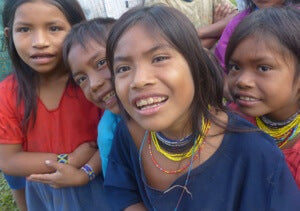Day 18
A malaria test for a Urarina from the Amazon region in Peru
 Don’t give malaria a chance!
Don’t give malaria a chance!


Malaria – the deadly danger in the Amazon region of Peru

need
Health – for learning and working – for the Urarinas at Chambira
activity
The Tucunare clinic provides the promoters from the Urarinas settlements with the basic equipment for malaria tests and medication. They have also learned how to use the medication for therapy.
Measurable performance
Number of malaria tests that could be performed
Result
Measurable decline in fatal malaria cases among the Urarinas
Systemically relevant impact
Generally improved health increases children’s ability to learn and adults’ ability to work.
background


The good deed
AboutPeru
Lima
Capital city
30814175
Population

$6,659.81
Gross domestic product
per capita per year

77
Human Development Index
(Human Development Index)



